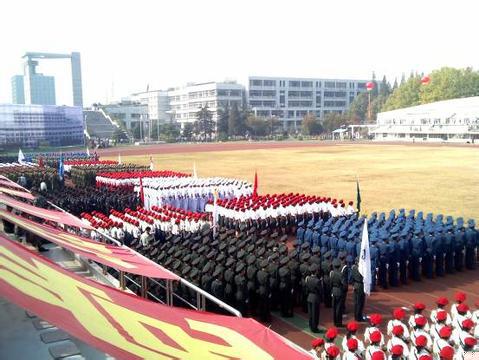hdu 4749 Parade Show (暴力水 (正解应该是kmp变形))
2017-08-22 12:39
465 查看
Parade Show
Time Limit: 2000/1000 MS (Java/Others) Memory Limit: 65535/65535 K (Java/Others)Total Submission(s): 2085 Accepted Submission(s): 843
Problem Description

2013 is the 60 anniversary of Nanjing University of Science and Technology, and today happens to be the anniversary date. On this happy festival, school authority hopes that the new students to be trained for the parade show. You should plan a better solution
to arrange the students by choosing some queues from them preparing the parade show. (one student only in one queue or not be chosen)
Every student has its own number, from 1 to n. (1<=n<=10^5), and they are standing from 1 to n in the increasing order the same with their number order. According to requirement of school authority, every queue is consisted of exactly m students. Because
students who stand adjacent in training are assigned consecutive number, for better arrangement, you will choose in students with in consecutive numbers. When you choose these m students, you will rearrange their numbers from 1 to m, in the same order with
their initial one.
If we divide our students’ heights into k (1<=k<=25) level, experience says that there will exist an best viewing module, represented by an array a[]. a[i] (1<=i<=m)stands for the student’s height with number i. In fact, inside a queue, for every number pair
i, j (1<=i,j<=m), if the relative bigger or smaller or equal to relationship between the height of student number i and the height of student number j is the same with that between a[i] and a[j], then the queue is well designed. Given n students’ height array
x[] (1<=x[i]<=k), and the best viewing module array a[], how many well designed queues can we make at most?
Input
Multiple cases, end with EOF.
First line, 3 integers, n (1<=n<=10^5) m (1<=m<=n) k(1<=k<=25),
Second line, n students’ height array x[] (1<=x[i]<=k,1<=i<=n);
Third line, m integers, best viewing module array a[] (1<=a[i]<=k,1<=i<=m);
Output
One integer, the maximal amount of well designed queues.
Sample Input
10 5 10
2 4 2 4 2 4 2 4 2 4
1 2 1 2 1
Sample Output
1
Source
#include<stdio.h>
#include<string.h>
#include<algorithm>
using namespace std;
int a[100003];
int b[100003];
int main()
{
int n,m,k;
while(~scanf("%d%d%d",&n,&m,&k))
{
for(int i=1; i<=n; i++)
{
scanf("%d",&a[i]);
}
for(int i=1; i<=m; i++)
{
scanf("%d",&b[i]);
}
int i,j,l,res=0;
int r=n-m+1;
for(i=1; i<=r; i++)
{
int rr=i+m-1;
for(j=1,l=i; j<m&&l<rr; j++,l++)
{
if((b[j]>b[j+1]&&a[l]>a[l+1])||(b[j]<b[j+1]&&a[l]<a[l+1])||(b[j]==b[j+1]&&a[l]==a[l+1]))
continue;
else break;
}
if(j==m)
res++,i=l;
}
printf("%d\n",res);
}
}
相关文章推荐
- HDU 4749 Parade Show(KMP变形)
- HDU 4749-Parade Show(KMP变形)
- HDU 4749 Parade Show 数据结构KMP变形
- HDU 4749 & POJ 3167 kmp变形
- HDU 4749 Parade Show(暴力水果)
- HDU 4749 Parade Show 相对匹配的KMP
- HDU 4749 Parade Show(暴力水果)
- Poj 3167 Cow Patterns Hdu 4749 Parade Show (KMP大小关系相同匹配+树状数组)
- hdu 4749 Parade Show(KMP)
- HDU 4749 Parade Show(KMP)
- HDU 4749 Parade Show(贪心+kmp)
- kmp变形 如何判断第i个字符是否匹配函数 hdu 4749
- hdu 4749 Parade Show ( kmp )
- hdu 3336Count the string(KMP变形,求前缀出现的次数和)
- hdu 4749 (转化的KMP)
- HDOJ 题目 4749 Parade Show(KMP)
- HDU5510 - Bazinga (kmp+暴力)
- HDU 4749 Parade Show(2013 ACM/ICPC Asia Regional Nanjing Online)
- HDU 4749 KMP + BIT HASH
- hdu_2328_Corporate Identity(暴力枚举子串+KMP)
